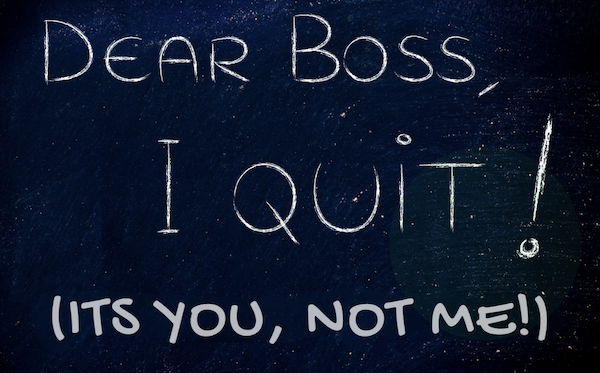
Continuous improvement - 10 common mistakes
Continuous Improvement Guide – Part 2
Welcome to part 2 of our continuous improvement guide. We’ll talk about things that often go wrong, and what to do instead.
If you’ve not yet read part 1 of the guide you may want to read The Essential Guide to Continuous Improvement – Part 1(Getting the Basics right).
Continuous improvement isn’t just about adding retrospectives or tweaking a few processes, it requires deliberate action, reflection, and culture-building.
In our work with teams and leaders, we’ve experienced some common pitfalls that slow things down, create resistance, and undermine well-intended efforts.
Here are our top 10 from the trenches:
- Not Starting with Yourself
- Skipping Relationship Building
- Not understanding the system and its history
- Confusing alignment with agreement
- Coming in like a wrecking ball!
- Ignoring continuous improvement metrics (or over complicating them)
- OMG, Let’s create a CI team – Yey!
- It’s not me, it may be you
- Optimising everything except the thing that matters
- Failing to create the space for improvement
1. Not Starting With Yourself
“Yesterday I was clever, so I wanted to change the world. Today I am wise, so I am changing myself.” – by Rumi is one of our favourite continuous improvement quotes.
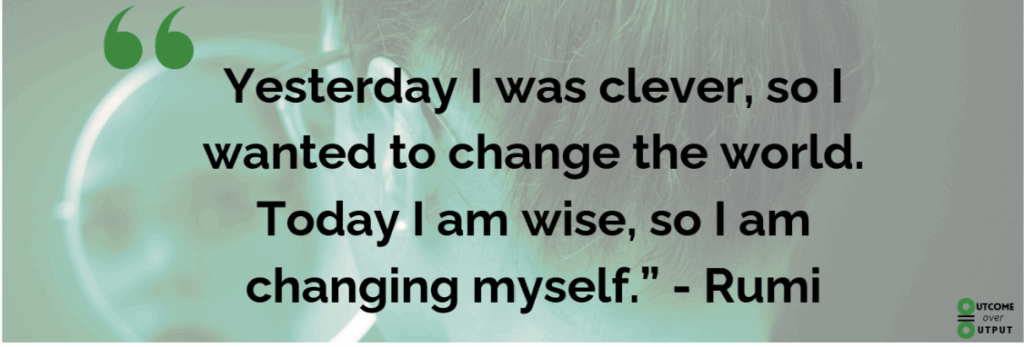
This is perhaps the most fundamental and yet most overlooked part of continuous improvement: it starts with you.
In almost every organisation we work with, we see leaders who are overwhelmed, calendars packed, endless meetings, and a culture of urgency. Still, the desire is for the teams to improve. However, how can they, when their leaders don’t model the same behaviour?
When leaders treat continuous improvement as optional or something to get to “once we’re less busy,” they send a clear signal: improvement isn’t really a priority.
Teams are often in mirrored states of chaos, pulled in multiple directions, trying to deliver under the same pressures. If you can’t carve out time, space, and attention for improvement yourself, how can you expect others to?
Leaders must be willing to look in the mirror first.
Examine how you spend your time:
- Are you constantly firefighting?
- Are you overcommitted to low-value work?
- Are you delegating?
- Are you modelling the kind of reflective, outcome-focused approach you’re asking others to take?
Improvement begins with awareness.
From there, it requires choice. The most powerful signal of change in any organisation is leadership behaviour.
2. Skipping Relationship Building
One of the most common missteps is trying to “fix” the system before investing in the people. Relationships aren’t optional, they are essential. Without trust, context, and rapport, you’re simply pushing change at people, not with them.
One of our most often used quotes is “Do change with people not to people”
This is not “fluffy stuff.”
Building relationships gives you access to context, knowledge, insights, pain points, and past attempts things no report or dashboard can offer. It also gives you the chance to build trust.
If you bring people along with you on the improvement journey you’ll have a much higher chance of being successful. Ask them to share their frustrations and pain points and get them involved in co-creation of potential solutions.
The fastest way to stall improvement is to treat humans as side characters in a process story.
3. Not Understanding the System and its History
Improvement efforts often fail because people don’t understand the system they’re trying to change.
You can’t just dive in.
Every system exists the way it does for a reason, often a complicated one.
We commonly see organisations jumping straight into adopting frameworks like Scrum, Kanban, or SAFe, expecting them to instantly solve all their problems. But frameworks are just tools. When they aren’t right for your context they can quickly degrade into mechanical rituals: daily stand-ups with no purpose, retrospectives with no change, backlogs that grow but don’t deliver outcomes.
Take time to understand your system before rushing to make a change. Observe, ask, listen. Understand not only what’s happening now, but also what’s happened before.
Questions like “How did we end up here?” or “What’s been tried in the past?” can reveal hidden patterns, risks, and opportunities. Experienced practitioners know how to balance observation and action without compromising either.
We like to use techniques from the Theory of Constraints (ToC) to help us understand the system and its current reality. Mapping out a process or building a current reality tree can help you to understand the system, the constraint and the root cause(s) and help to ensure that you are addressing the right problem.
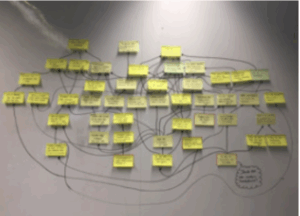
Photo Credit: Outcome Over Output – A Current Reality Tree built for a client
When you do start to consider bringing in a new practice or framework, start with values. Then define principles. These will provide the ‘why’ behind the practices. Then you can select frameworks or tools that serve those values, not dictate them.
Values create resilience and commitment; frameworks only create structure. And structure without meaning falls apart the moment things get hard.
4. Confusing Alignment with Agreement
A lack of alignment is one of the most damaging and overlooked blockers to improvement. But before we fix it, let’s be clear on what alignment actually means.

Dictionary definitions:
- Alignment (American Heritage Dictionary): “The act of adjusting parts so that they are in proper relative position; a state of agreement or cooperation among persons, groups, etc., with a common cause or viewpoint.”
- Agreement (Merriam‑Webster): “Harmony of opinion, action, or character … an arrangement as to a course of action.”
Here’s the key difference:
- Agreement is everyone sees things the same way.
- Alignment is we may see it differently, but we’re on board with the same next step.
Example:
- Agreement: Everyone on the team believes Feature A is the top priority.
- Alignment: Some think Feature B is more important, but we all agree to move forward with Feature A for this sprint and support it fully.
A team without alignment is like a rowing crew paddling in different directions.Lots of effort, no progress. You don’t need full agreement to move forward, but you do need alignment. Like trust, alignment must be regularly checked in and not assumed.
5. Coming in Like a Wrecking Ball
Have you ever found yourself focusing only on what’s broken? It’s easy, almost instinctive to walk into a new environment and start listing all the things that aren’t working.

Photo Credit: Miley Cyrus’s Album
However this approach often backfires. People have usually invested significant time, effort, and thought into their ways of working, and when that effort is overlooked or dismissed, it can damage relationships before they have even begun. Recognising what is working well is just as important as identifying opportunities for improvement.
Language plays a powerful role in this dynamic. The words we choose shape how our messages land, and whether they build connection or resistance. Negative or overly critical language, even when well-intended, can quickly shut people down. On the other hand, using encouraging, balanced, and respectful language helps others feel seen and safe which is essential if we want honest conversations and shared ownership of improvement.
As humans, we’re often wired to spot problems but in a continuous improvement culture, we also need to also deliberately train ourselves to notice strengths.
Appreciating the good helps foster trust, and trust is the currency of meaningful, lasting improvement.
6. Ignoring Continuous Improvement Metrics (or Overcomplicating Them)
Without metrics, you are guessing.
You won’t know what’s improving, what isn’t, or where to focus. That said, many teams overcomplicate this. They try to be clever with creating continuous improvement metrics, building elaborate dashboards with metrics no one understands or uses.
Start with one metric.
Make it simple.
Make it visible.
Make sure everyone agrees on it.
It could be something as basic as lead time, throughput, or cycle time.
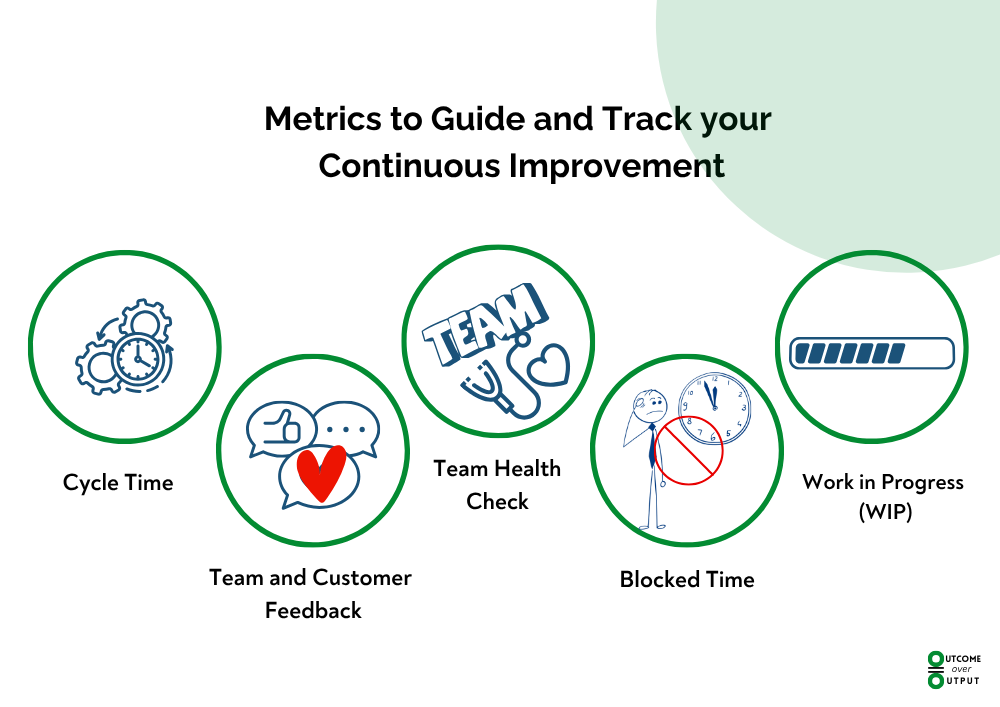
Click here to read more about metrics.
Whatever it is, use it to spark conversation and validate improvement. Remember KISS but most important, keep it actionable.
7. OMG, Let’s create a CI Team! YAY!
Here’s a controversial one: don’t create a “Continuous Improvement Team.”
Yes, it sounds good in theory. But in practice, it sends a dangerous message: that improvement is someone else’s job.
True improvement should be part of everyone’s role. Like Dr Seuss says “Unless someone like you cares a whole awful lot, nothing is going to get better. It is not”.
When it’s owned collectively, it becomes part of the team’s DNA not a sideline project.
A separate improvement team outsourcing your continuous improvement unintentionally creates a passive culture.
You hear things like “That’s not my job,” or “We will wait for the CI team to fix it.” Ownership evaporates.
8. It’s Not Me, It May Be You
One of the common mistakes is assuming that just because we have identified a problem, we are the right person to solve it.
In reality, that’s not always the case. Sometimes the issue at hand requires technical expertise we don’t have, or it may be better addressed by someone with an established relationship or the right rapport with a particular team or department.
It’s important to recognise when to step back, collaborate, or bring someone else in. This isn’t about stepping aside entirely, it’s about acting ethically and in the best interest of the system.
Trying to be the hero of every problem often leads to diluted impact and missed opportunities for real improvement.
Another favourite quote of Vinnie’s is “I would rather be someone’s shot of whisky than everyone’s cup of tea”.
True leadership lies in knowing your strengths, owning your gaps, and building partnerships that raise the quality of the work, not just the visibility of the individual. It may be the best way to lose your staff if it’s always Me! Me! Me!
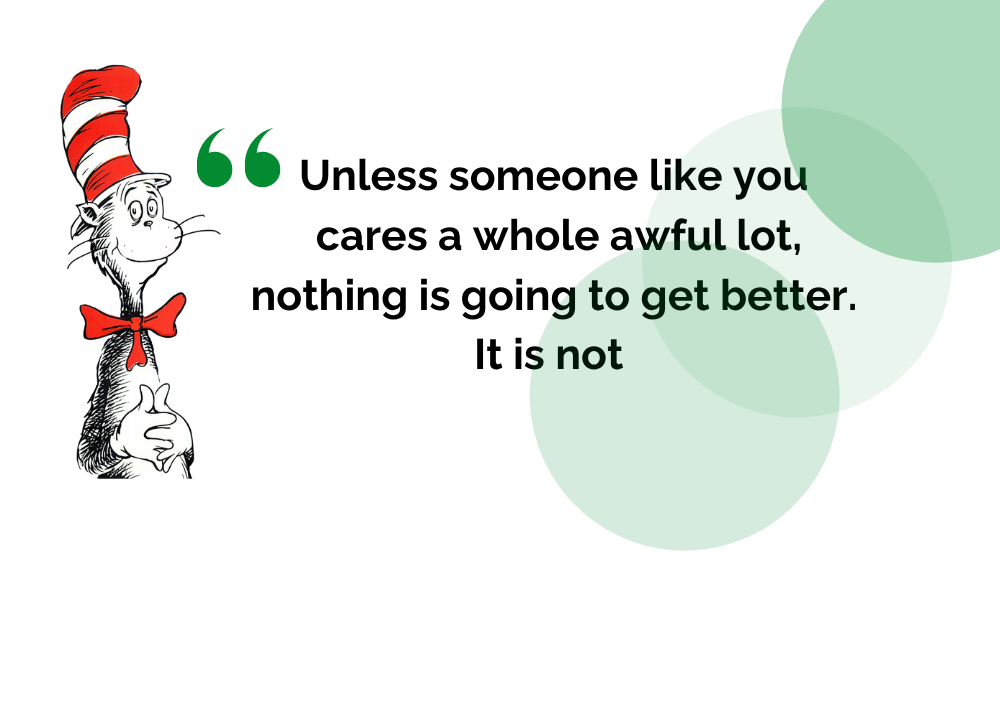
9. Optimising Everything Except the Thing That Matters
One common mistake when making improvements is treating every inefficiency as equally important. It can feel productive to streamline a process, automate a form, or speed up handovers, but if the improvement isn’t at the constraint of your system, it won’t make a meaningful difference to the overall throughput of your system.
In fact, making local optimisations in non-bottleneck areas can create a false sense of progress while actually increasing cost, complexity or overloading downstream teams.
The Theory of Constraints (TOC) teaches us that every system has one key limiting factor – the constraint. This is the point in the flow that determines the overall pace of delivery. Improving anywhere else is simply making things “better” in theory while not improving throughput in reality.
If you improve everywhere except the constraint, your system doesn’t go any faster. You just get better at being stuck.
Aim to find the constraint (or root cause of the problem) first, then focus your improvement efforts where they will have the biggest systemic impact.
Continuous improvement should be about increasing flow, not just increasing activity.
10. Failing to Create the Space for Improvement
Finally, remember that continuous improvement takes space – mental, emotional, and time-based.
Yet it’s often deprioritised in favour of being “busy.” When leaders rush from meeting to meeting, wear busyness like a badge of honour, and treat reflection as a luxury, they model a culture where improvement becomes impossible
If teams don’t have time to think, reflect, and act intentionally, they will continue optimising for the wrong things or simply spin in place. Eliminate waste, reduce noise, and create space for people to think clearly and calmly.
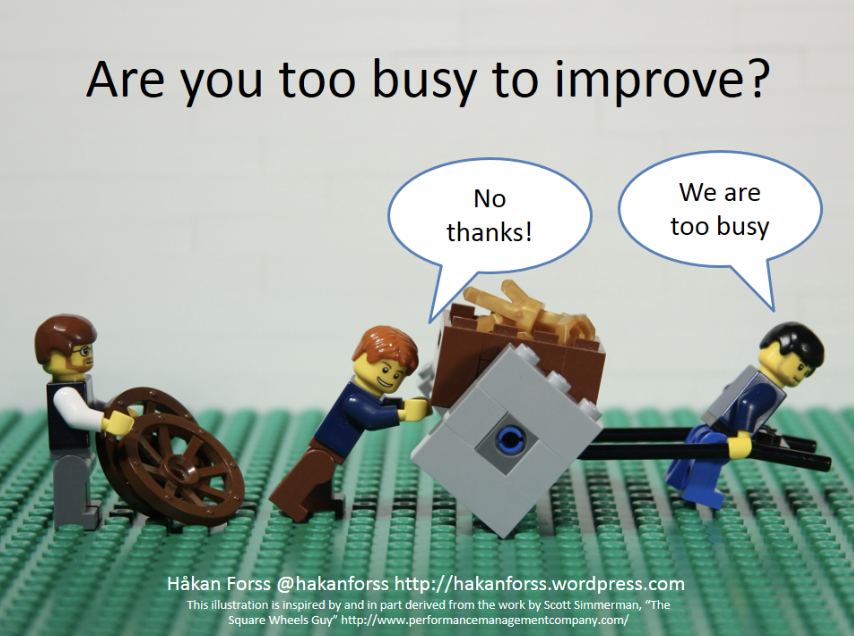
The cost of not improving is far higher than the effort it takes to make it part of how you work.
Improvement begins not with perfection, but with a first step.
Subscribe to our newsletter below for free and receive a monthly product and delivery deep dive.
Continuous improvement – 10 common mistakes Continuous Improvement Guide – Part 2 Welcome to part 2 of our continuous improvement guide. We’ll …
What is a Future Reality Tree? Suzanne Morrison In this post, we will explain what a Future Reality Tree is and how …
The Essential Guide to Continuous Improvement – Part 1 This is not your Average Continuous Improvement Guide Welcome to the second instalment …
Struggling with Meeting Engagement? Use PODS We were in the middle of a high-pressure project. One that everyone across the business was …



